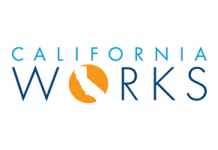In this episode of The Workplace podcast, CalChamber Executive Vice President and General Counsel Erika Frank and Lyndon Huling, manager for leadership recruitment and diversity services at the University of California, Davis, share insights on developing diversity and inclusion programs in the workplace.
Diversity and inclusion are at the forefront of the discussions that leaders and the business community are having. What, Frank asks Huling, are the biggest issues related to diversity and inclusion that businesses are facing right now?
Huling replies that in many ways companies are having a reckoning and are “understanding that diversity, equity and inclusion is crucial to the foundation” of success. They are starting to ask the big questions of what it means to actually operationalize this mission in functional and meaningful ways.
Where to Start
The topic of diversity and inclusion can feel overwhelming at times, Huling says. Organizations and business leaders may have a passion for it, and may realize that inequities exist, but it’s hard to know where to start.
Businesses should start with a plan. Huling recommends that business leaders should ask themselves how they can turn this big problem into something manageable and measurable for their company.
It’s also important to start with a shared understanding of the company’s values and mission. For example, Huling points out that he sees many job openings for professionals who can address diversity and inclusion, but oftentimes the context of what diversity means for that company is not there.
So, once a company has everyone on the same page, then the company can start talking about strategy, developing a roadmap, drawing in talent, and creating a culture that is inclusive, Huling says.
Tips
It’s one thing for business leaders to have a passion for diversity and inclusion, and realize that it should be a priority, but it’s another thing to walk the walk, Huling says.
Frank points out that there is no cookie-cutter solution to diversity and inclusion. How, she asks, can companies make a strategic long-term decision in commitment?
Business leaders should take the time and think about the components of their diversity and inclusion goals and think about how it tangibly looks like in action for their company, Huling replies.
Once those priorities are set, companies should organize their workers and leaders around a set of practices to accomplish their goals. It may sound like a daunting task, but if businesses take the time to take apart the components of their diversity and inclusion strategy, it becomes much more manageable, he explains. Then companies can put people in place to put the mission and vision into action.
In the area of recruitment for example, Huling points out that companies can ensure they have diverse selection committee members and think about the marketing materials and imaging they use when they talk about their brand. Even thinking about how job descriptions are written can be important in signaling that diversity, equity and inclusion is a priority.
“So, some of the work is in the weeds and some of it is the more glamourous forward-facing work, but it’s all equally important,” Huling says.
Educating the Workforce
Business leaders should also keep in mind that their company’s workforce is stepping into the conversations surrounding diversity and inclusion from across the spectrum. Some employees may be leaders in the diversity space and know the language and strategy; others may be in between and know the language but don’t know how to engage; and other folks may be entering the conversation for the first time, Huling explains.
He recommends that companies begin with introductory topics and create a safe space to talk about issues such as race or sexual orientation. Companies need to build trust and create a culture where everyone feels included and feels heard.
Another important component of this work is to conceptualize it, making diversity, equity, and inclusion relevant to the individuals that are being trained.
“When you talk about diversity in the abstract it’s easy to think about it as something else, whether it’s somebody else’s problem or something that’s detached from the work that you’re doing,” Huling says. “Where I have found people really derive meaning from these trainings is when they can see the implications of diversity, equity and inclusion in the work that they do.”
Recruitment
Many businesses gravitate toward recruitment efforts first because it’s an easy place to measure the impact of their mission. But recruitment is not everything, Huling cautions. Attracting the talent is only one piece of the puzzle—it’s equally important to ensure that the infrastructure exists to keep that talent.
“You don’t want to promise something that doesn’t exist internally,” he stresses.



